One of the most important factors of polishing, be that by hand or by mahcine, is the amount of paint that you are removing from the car with any given polishing method. In this thread, I am going to outline an example of a car which is being polished and the amount of paint removed by each set of polishes - there's more here than simply how much paint removed and what results it gives, there's also something well worth noting which we will get to at the end 
The car used in this example: A white (faded) Vauxhall Vectra SRi V6:
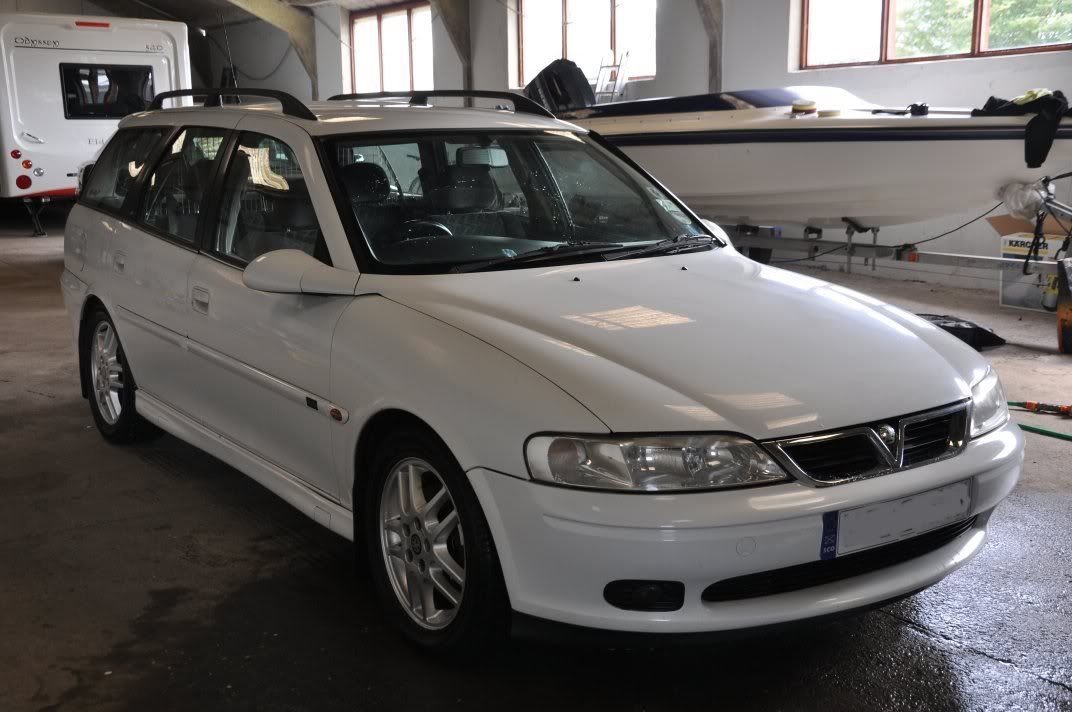
The paint was well faded...
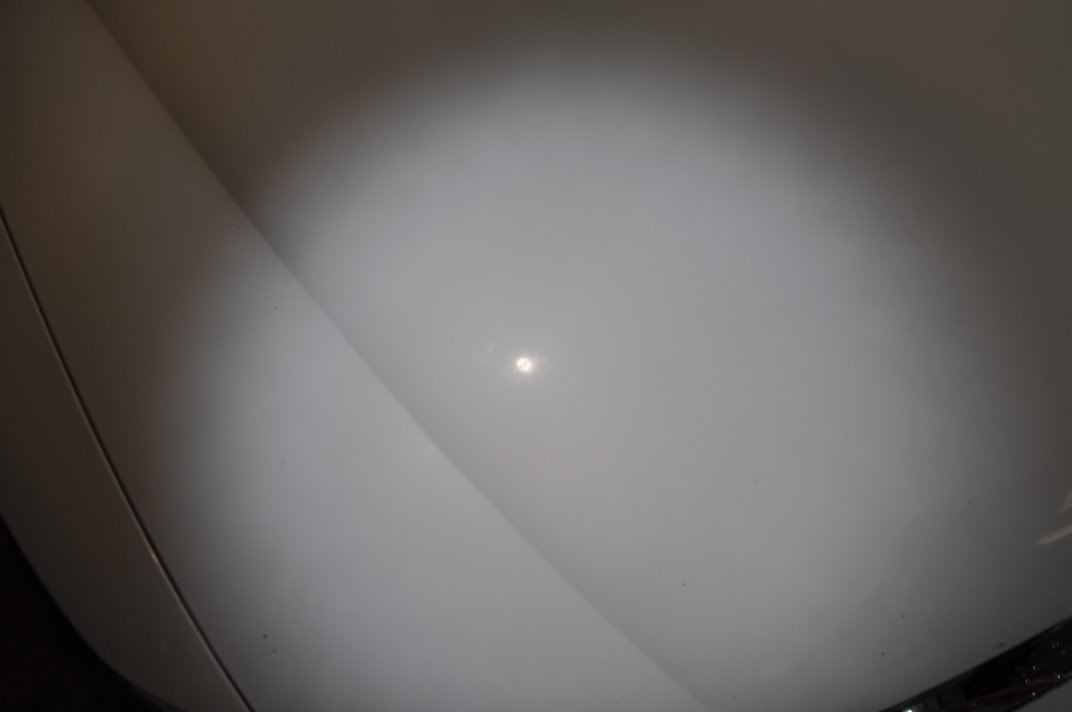
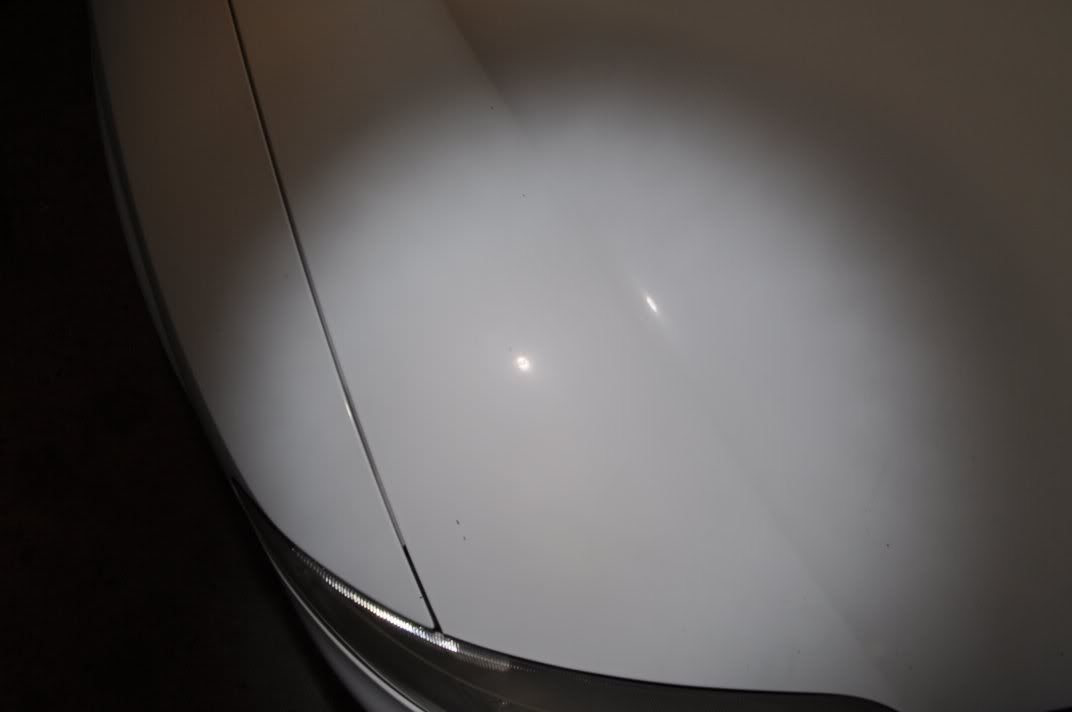
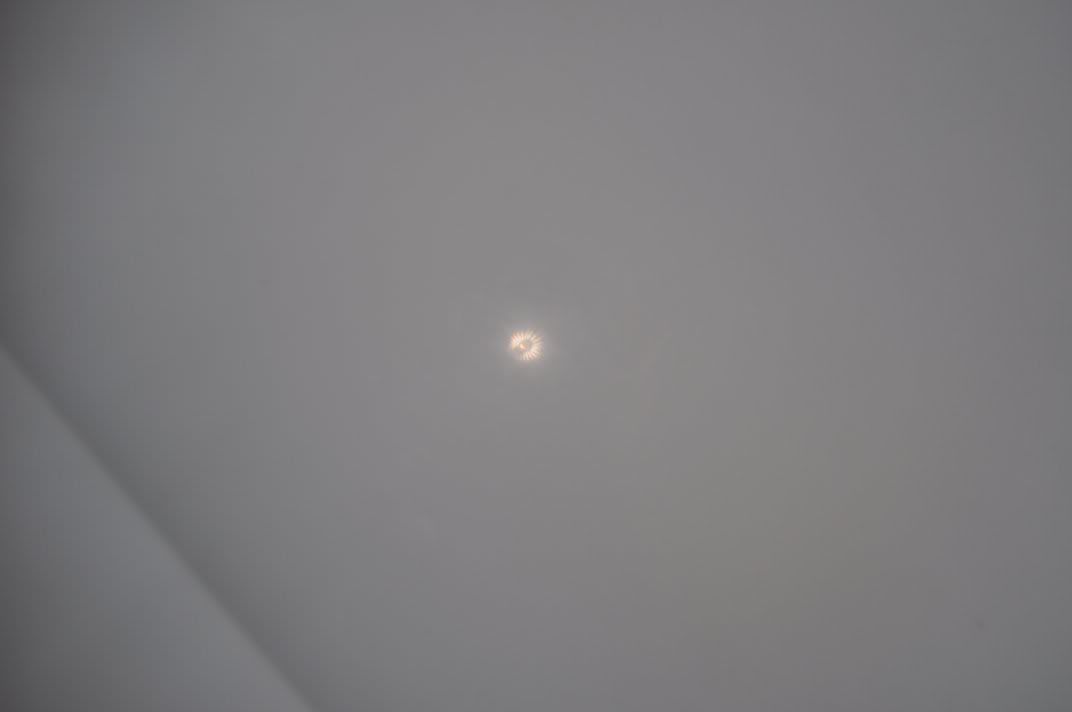
The full detail on this car will be the subject of a writeup in a few days time - I have a visitor from Romania, Alex, who is learning the ropes of detailing with me and this is one of his projects But for now, this car will be sued as an experiment base for this example
But for now, this car will be sued as an experiment base for this example 
First of all, we measure the paint thickness on a selected spot on the car, round a stone chip that wont polish out we took 10 or so readings of the paint thickness over the same spot and calculated the average thickness before starting to polish.
The starting thickness: Start Thickness = 119.0um
First of all, the car was polished using Menzerna PO85RD Final Finish on a Meguiars Finishing pad - very light combination, not expected to achieve much correction or remove much paint. The results of polishing with this combo, by rotary, using the Zenith Point Technique:
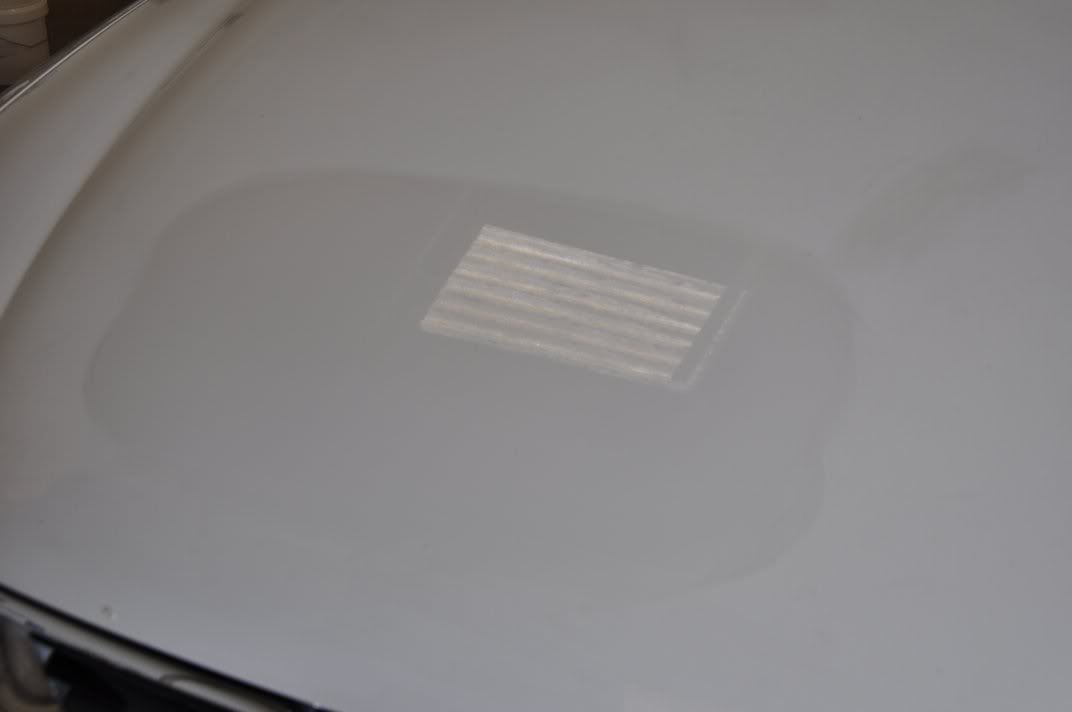

Under the Sun Gun, the colour and some of the gloss restored but still a lot of scratches there...


Using the strip light we can see the deeper RDS better, and also we see a pitting in the paintwork - this is a road rash, lots of little stone chips which are very deep into the paintwork. We will look at removing these and the thicknesses removed required to do so...
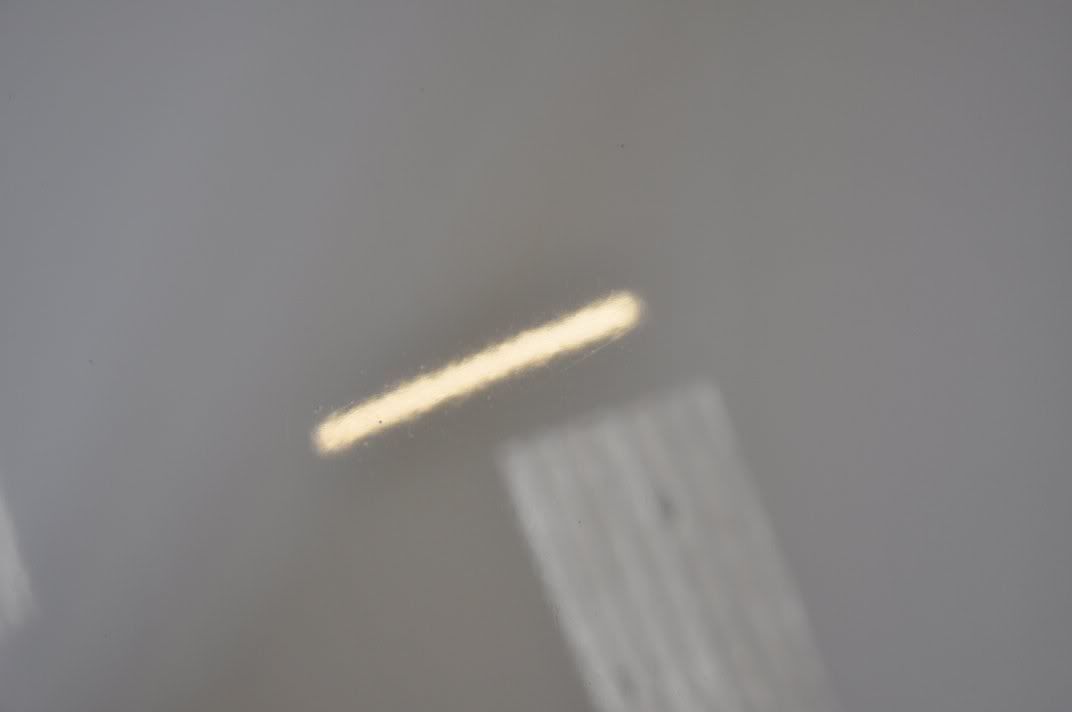
The thickness after one hit of 85RD: After 85RD = 117.3um
A removal of: Paint removed = 1.7um
Now, stepping up to Menzerna PO106FA Final Finish, applied using a meguiars W8006 polishing pad using the Zenith Point Technique and we get the following results under the Sun Gun:
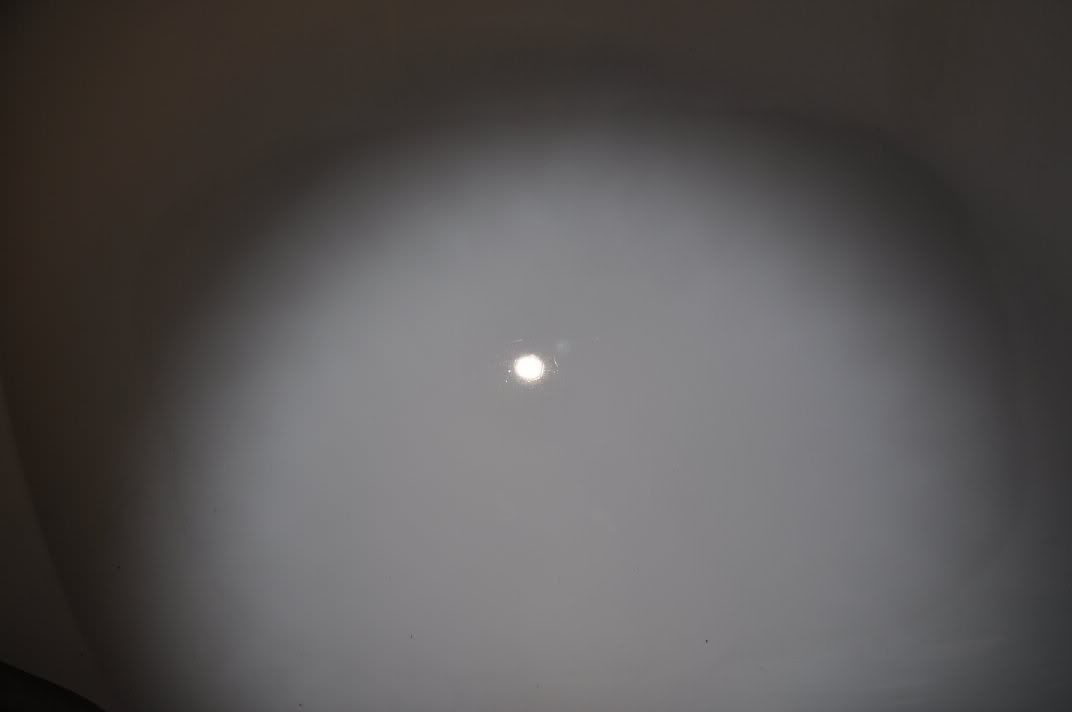
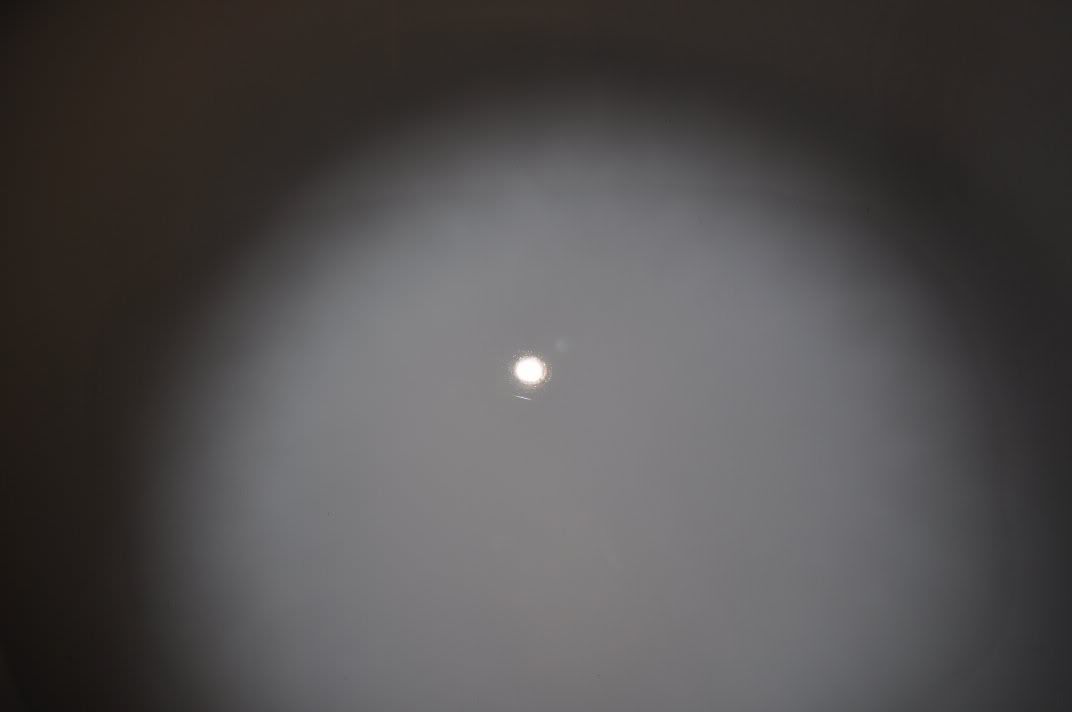
and under the strip light, where we still see deeper scratches and the pitting...
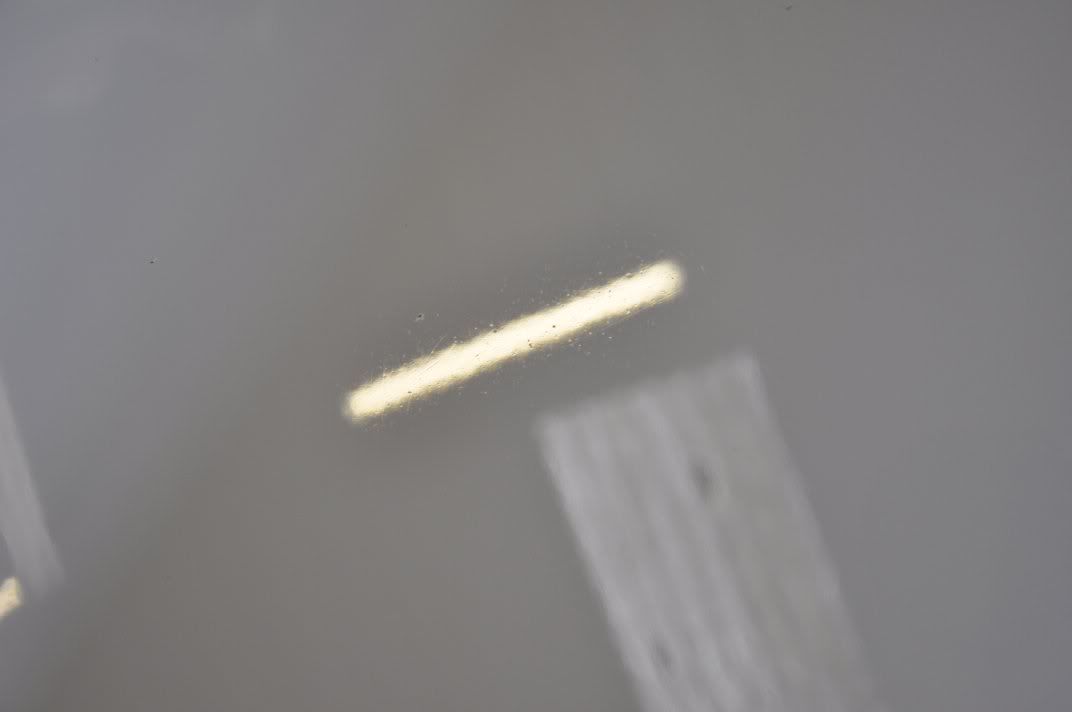
The paint thickness after 85RD and 106FA: After 106FA = 116.6um
A removal of: 106FA Removal = 1.1um
Stepping up again, to Menzerna PO85RD3.02 Intensive Polish on a polishing pad, applied using the Zenith Point Technique and we get the following results...

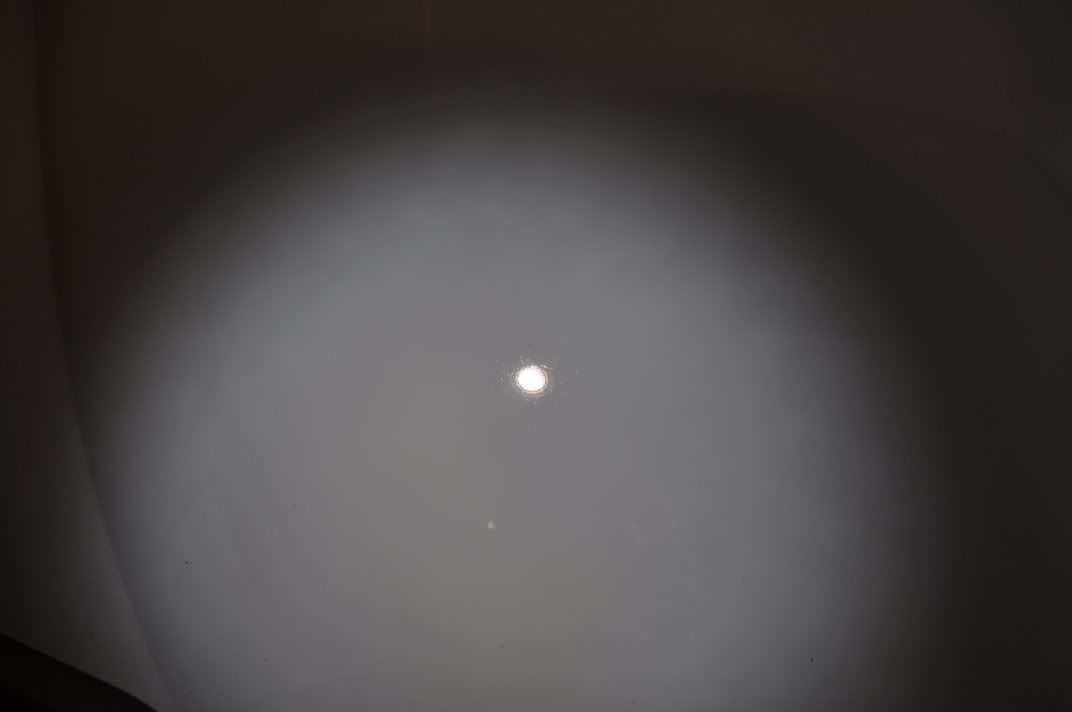
Under the strip light we see the deeper RDS are now largely removed, but the pitting remains strongly...

Definitely making a difference to the finish though!
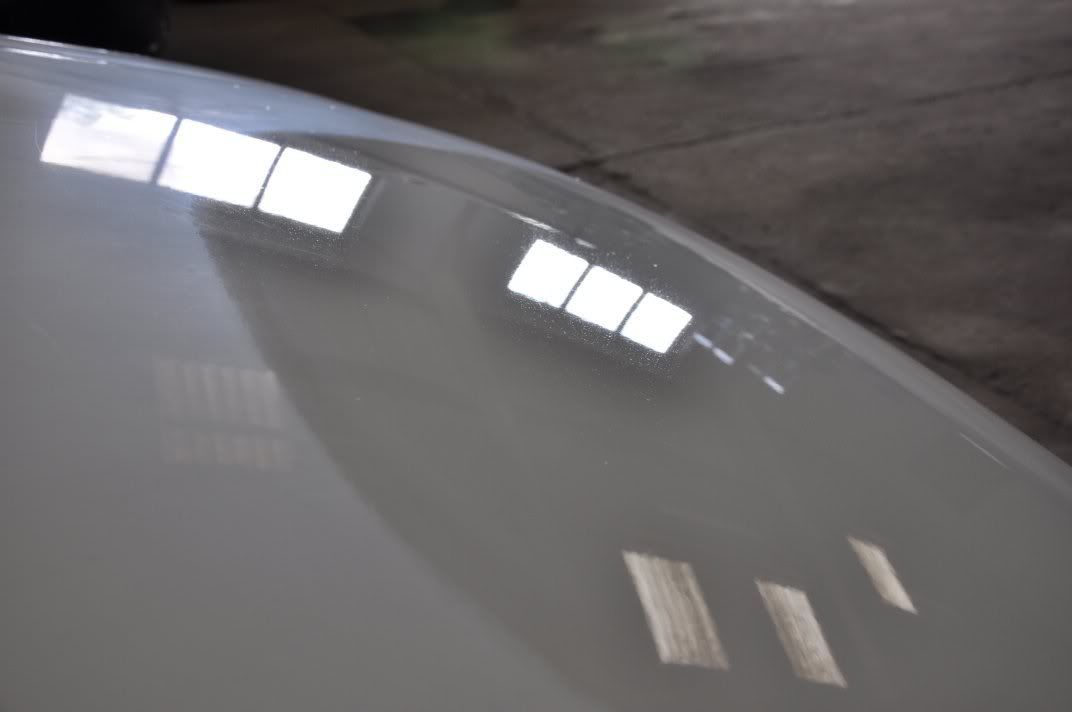
The paint thickness after 85RD, 106FA and 85RD3.02: After 106FA = 116.2um
A removal of: 85RD3.02 Removal = 0.4um
With less than 3um of paint removed this far, it was decided it was safe to step up to more aggressive compounding to see if the pitting could be minimised further. So, up to 3M Fast Cut Plus, Meguiars W7006 cutting pad, applied by spreading at 600rpm and working at 2000rpm until residue goes clear and machine starts to drag slightly. Results after one hit of FC+:
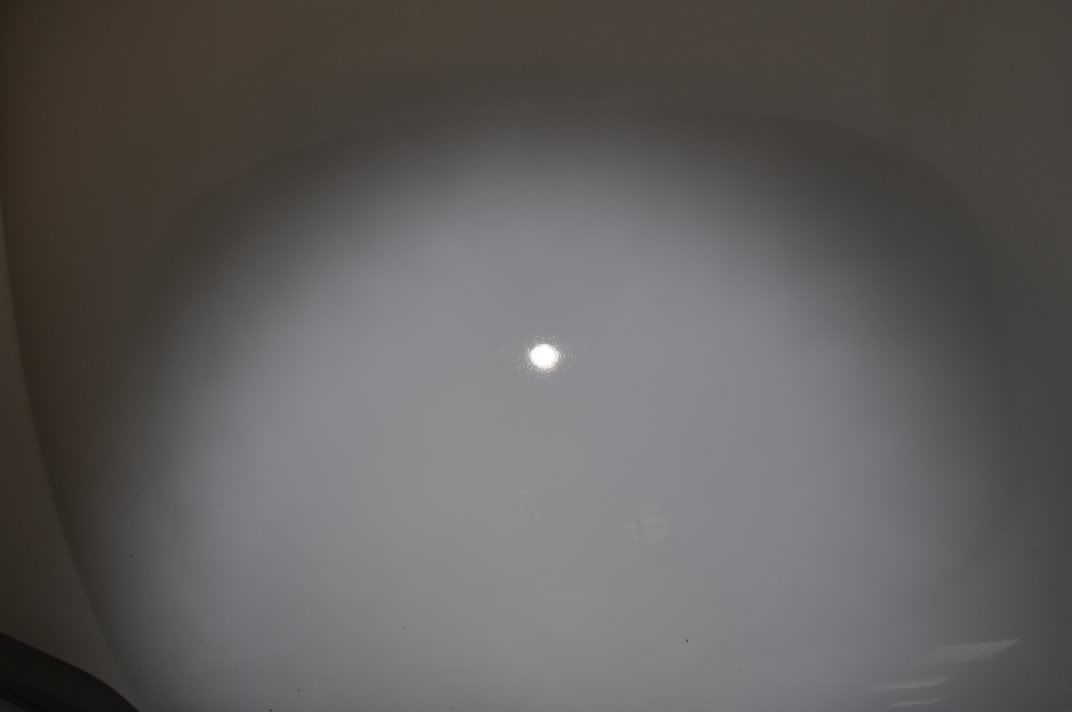

Under the strip light, still see the pitting but its getting better...
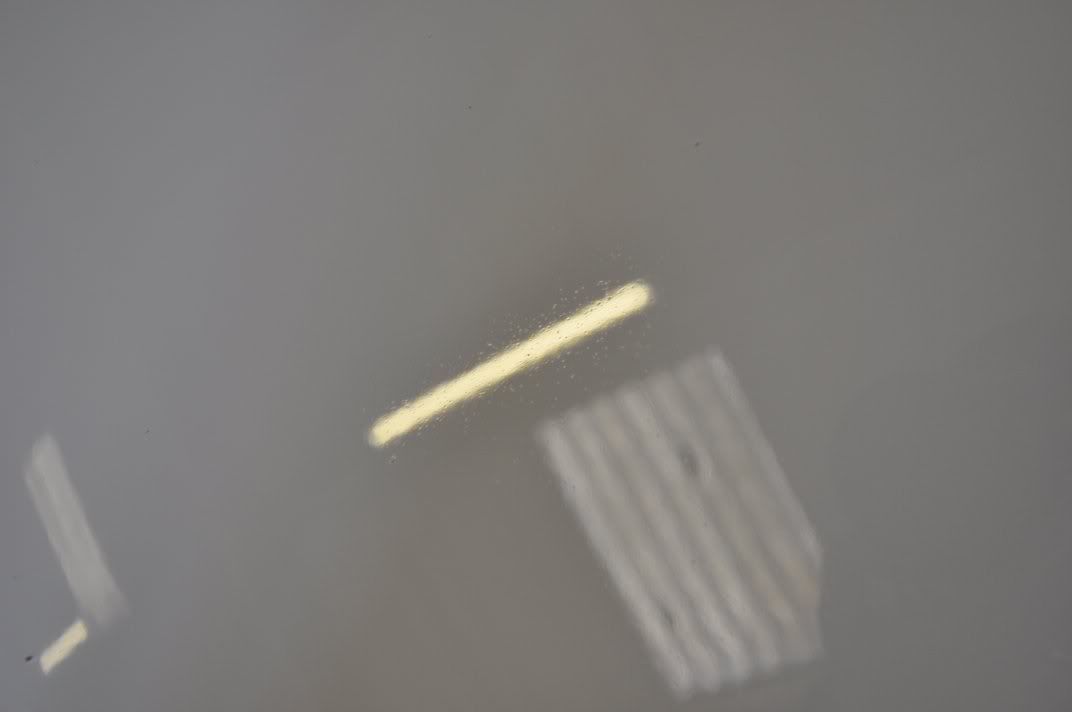
The paint thickness after 85RD, 106FA, 85RD3.02 and FC+: After FC+ (1st) = 114.4um
A removal of: FC+ Removal = 1.8um
A second hit of FC+ gives:
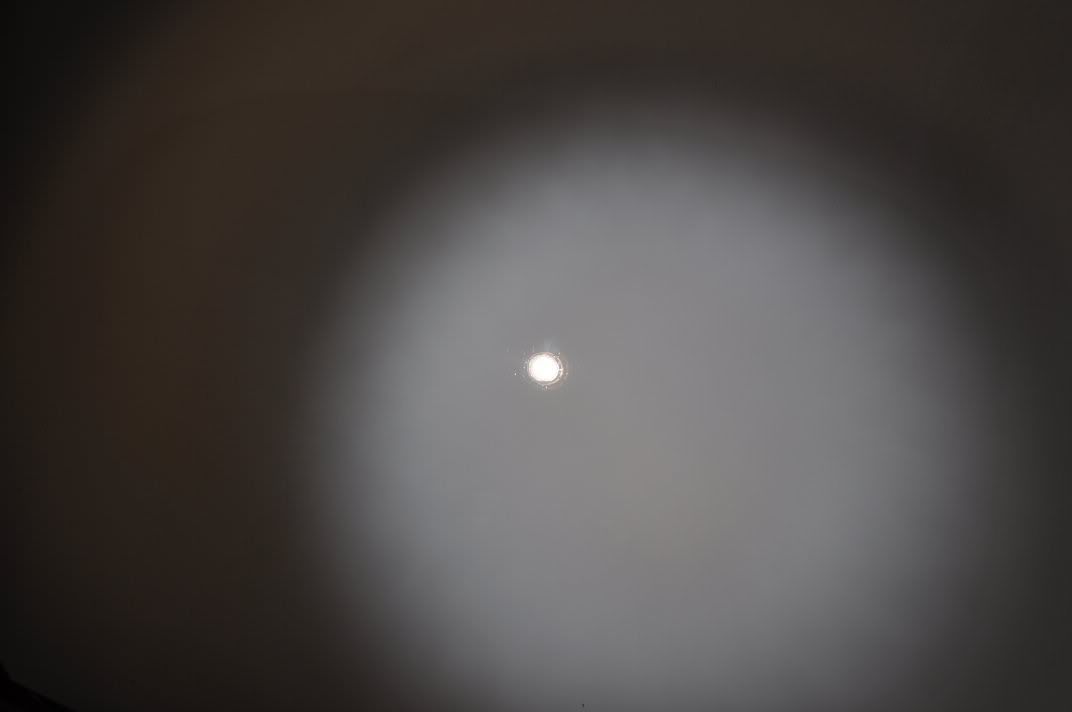

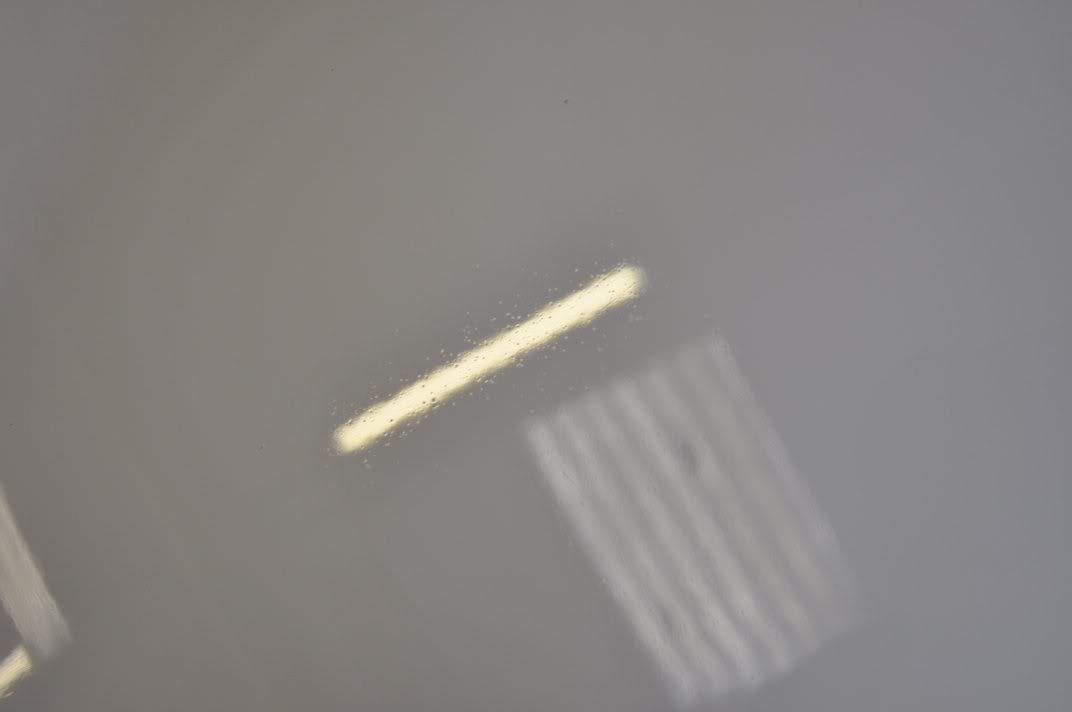
The paint thickness after 85RD, 106FA, 85RD3.02 and 2xFC+: After FC+ (2nd) = 115um
A removal of: FC+ Removal = -0.6um (paint added - this is measurement error)
A third hit of FC+:
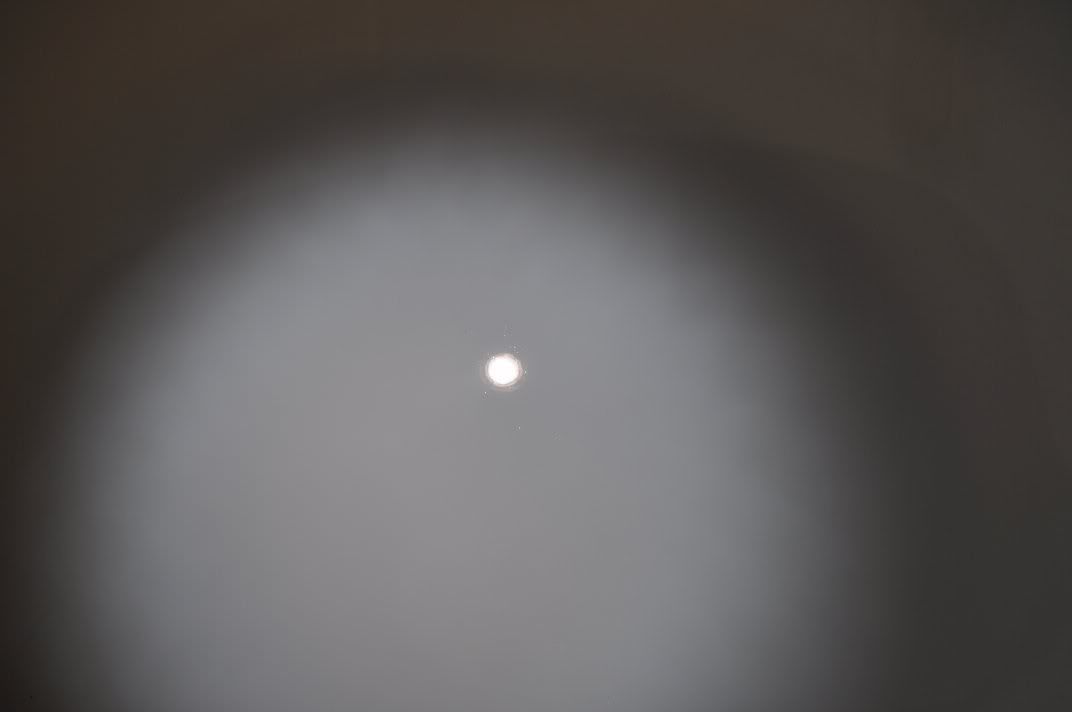
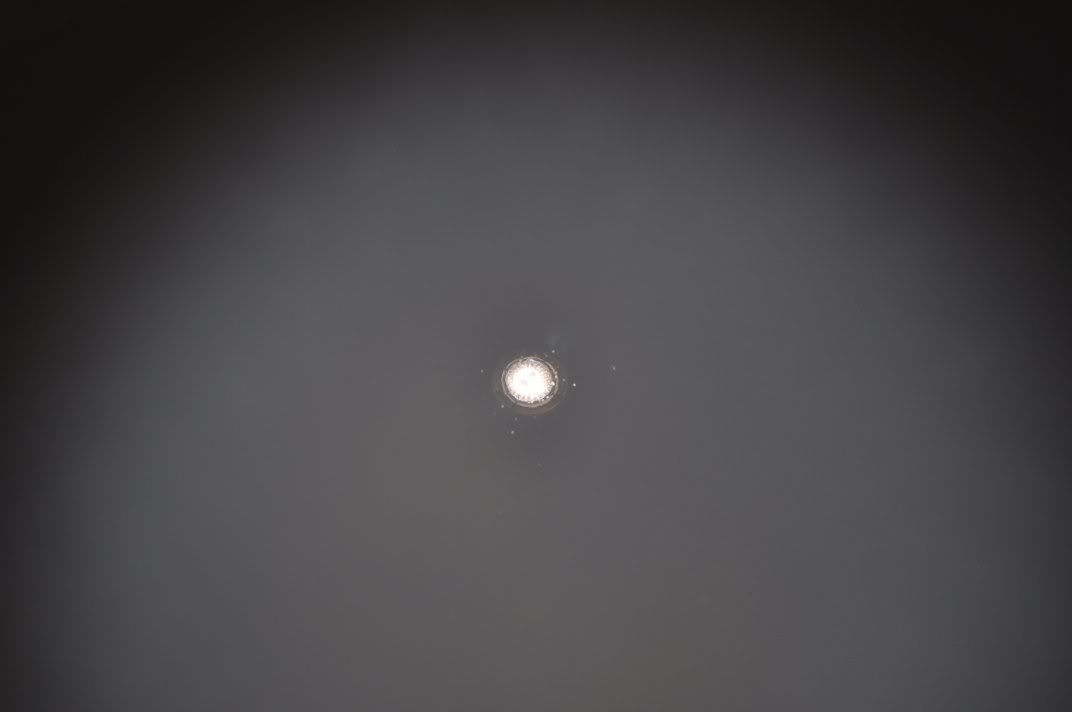
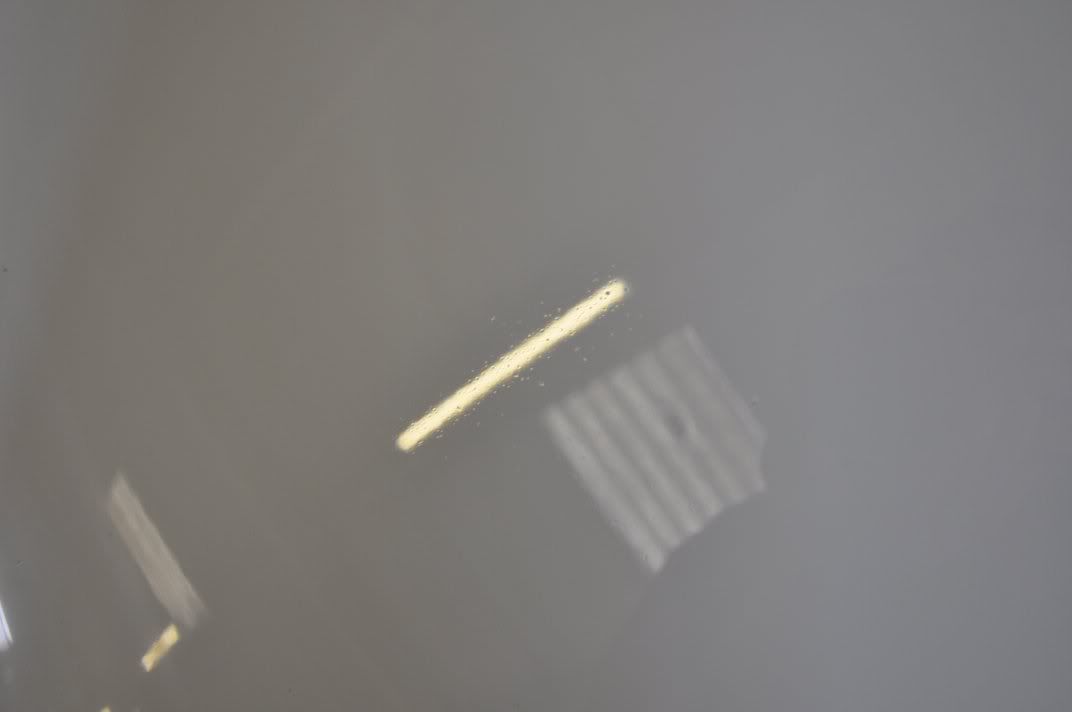
The paint thickness after 85RD, 106FA, 85RD3.02 and 3xFC+: After FC+ (3rd) = 113.2um
A removal of: FC+ Removal = 1.8um
As the pitting is minimising but still there, we keep going with FC+ - we could get more aggressive with #105 or wool here, but the FC+ on foam allowed for a flexible and controlled removal rate.
So - after 4th hit of FC+:
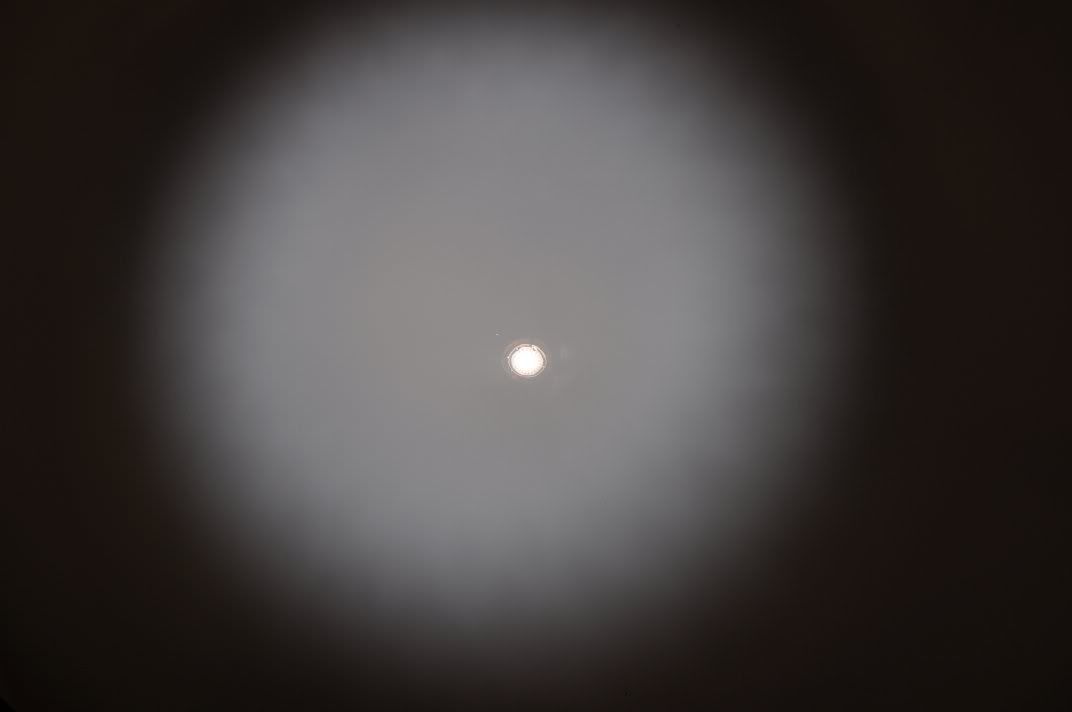
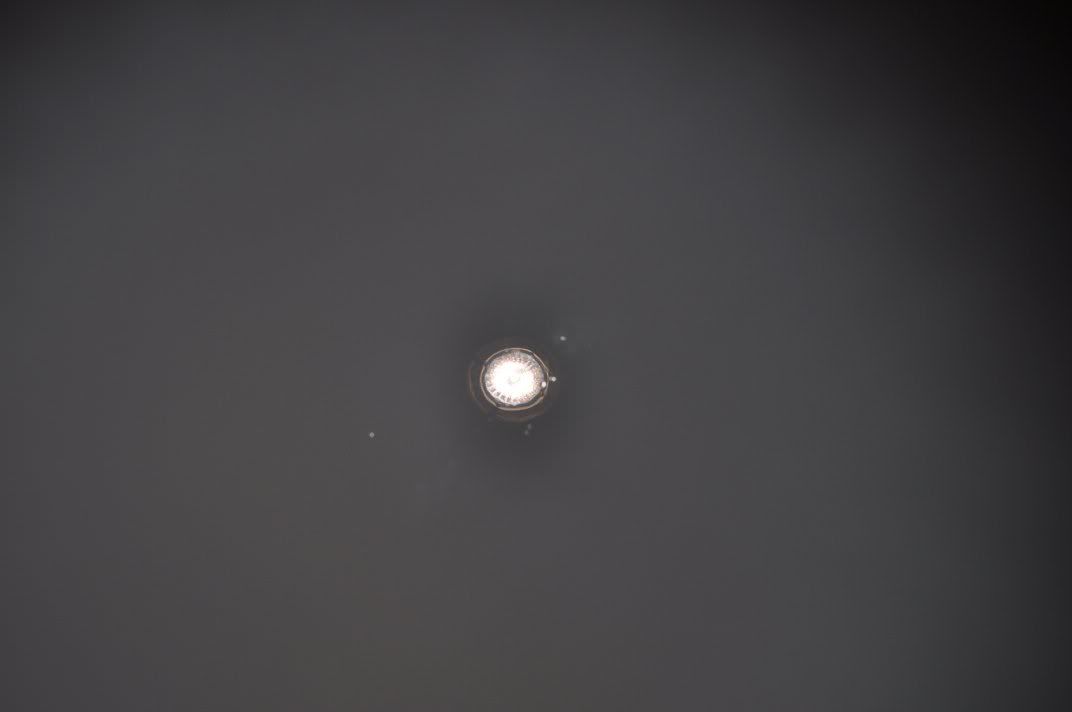
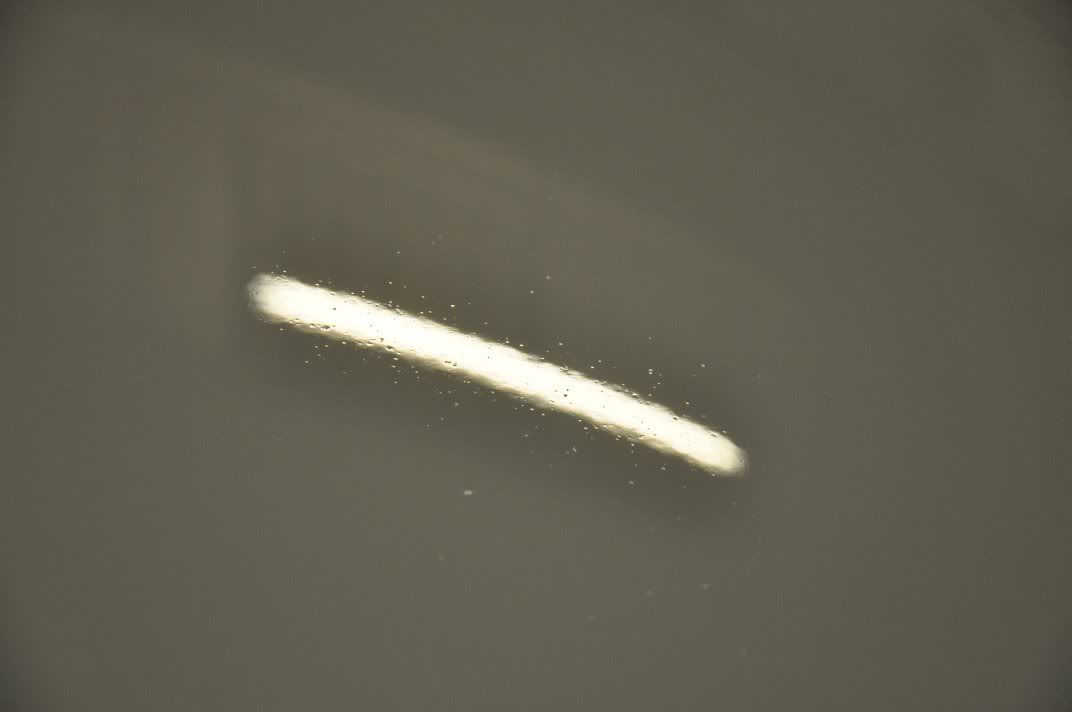
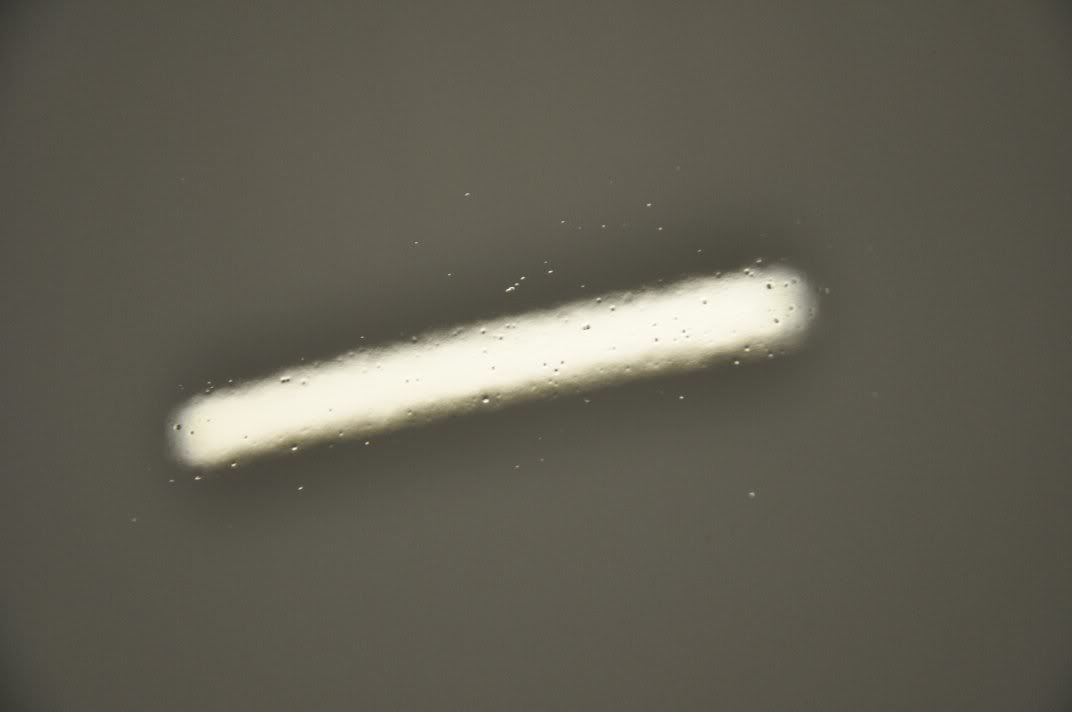
Pitting definitely improving here. Paint readings:
The paint thickness after 85RD, 106FA, 85RD3.02 and 4xFC+: After FC+ (4th) = 108.4um
A removal of: FC+ Removal = 4.8um
Bigger paint removal here.
5th and final hit of FC+ gives:
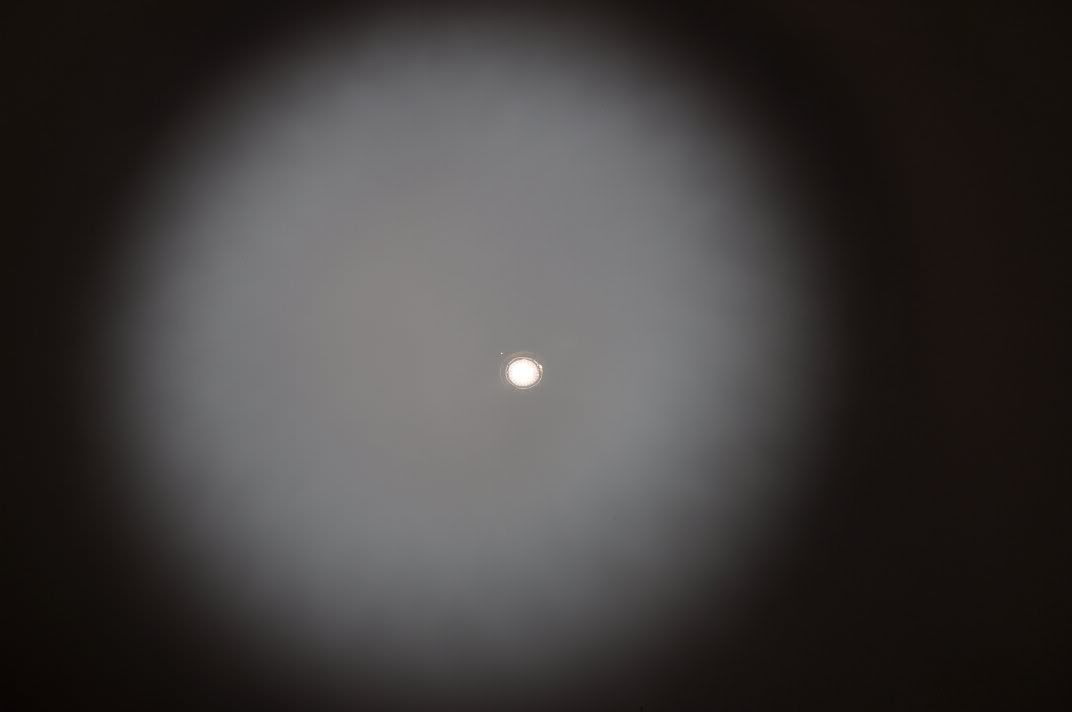
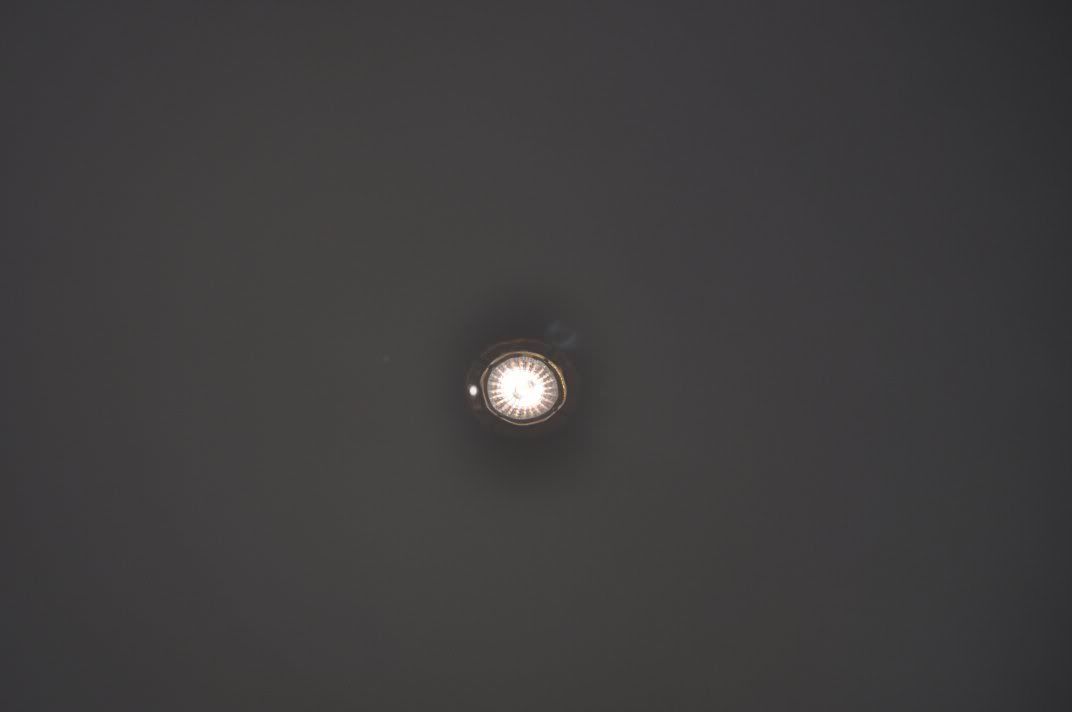
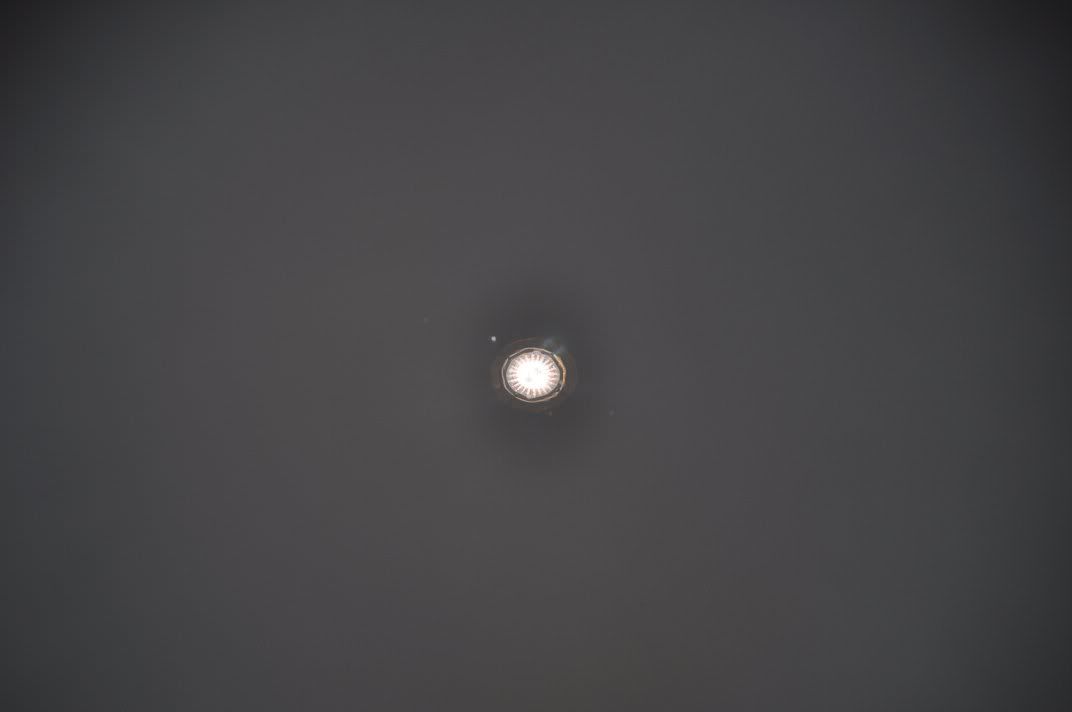
Under the strip light we can see the pitting well and truly deadened if not fully removed (remember, these are pin pricks from stones and grit, so they are deep!):
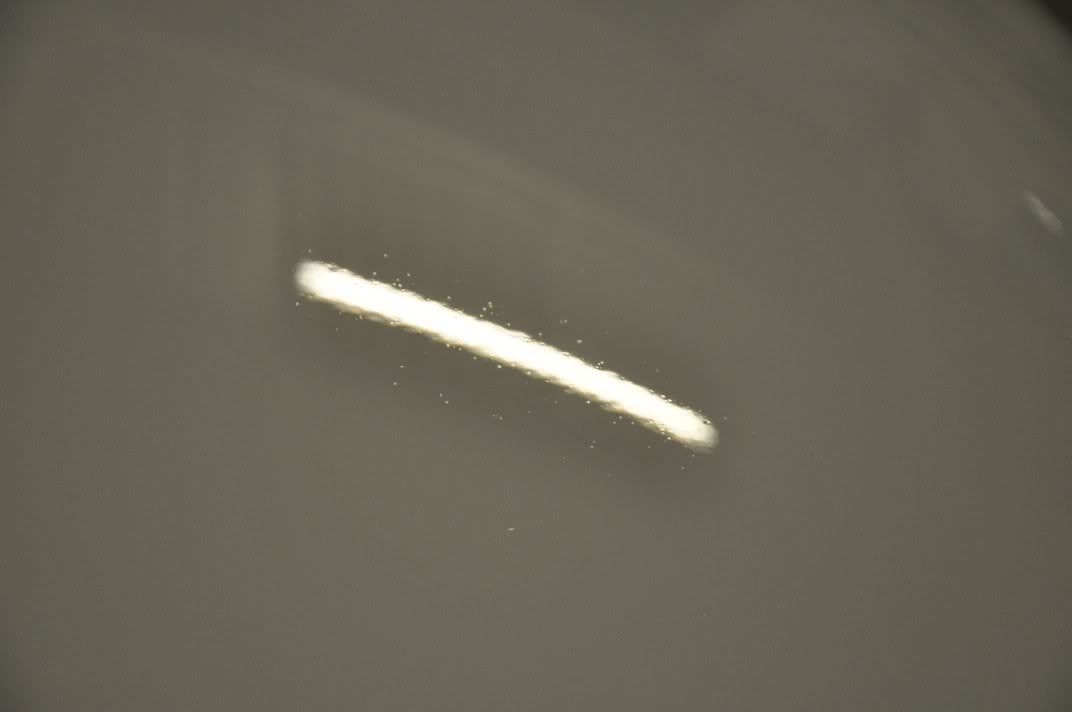
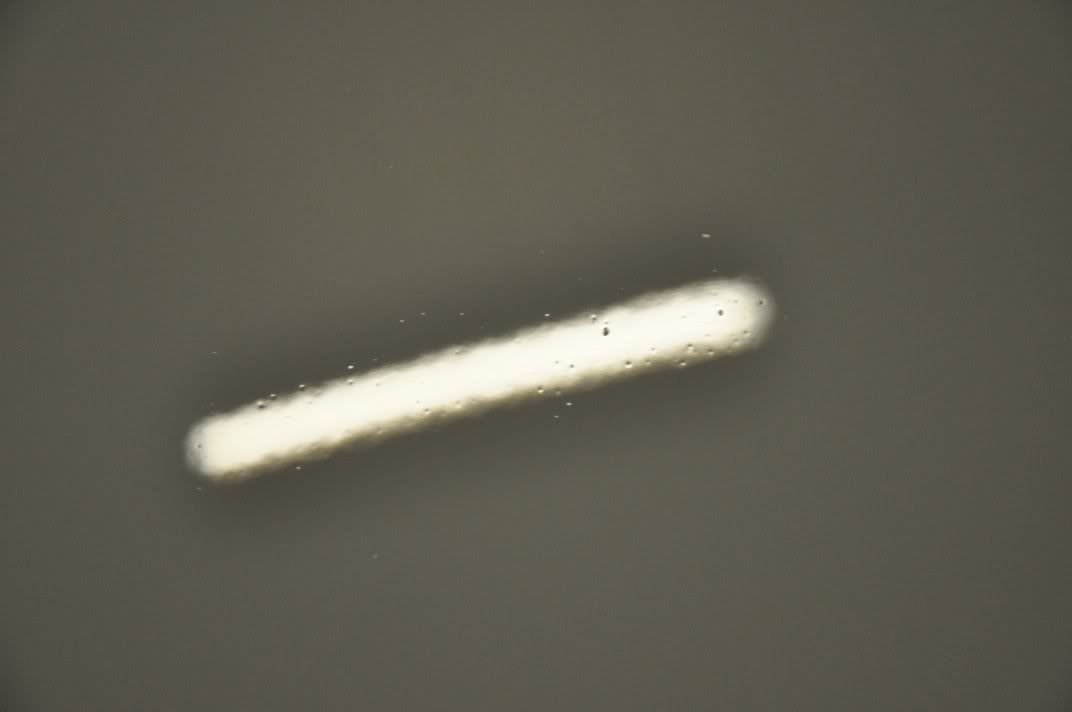
What of the paint thicknesses?:
The paint thickness after 85RD, 106FA, 85RD3.02 and 5xFC+: After FC+ (5th) = 107.1um
A removal of: FC+ Removal = 1.3um
The finish was then refined using 106FA on a polishing pad, and this gives the following final finish results - still slight evidence of the pitting, but with notable paint removal now, it is best to leave these marks to allow for future correction on the car at a later date, as this pitting will return with more miles (currently 100k on this car just now).


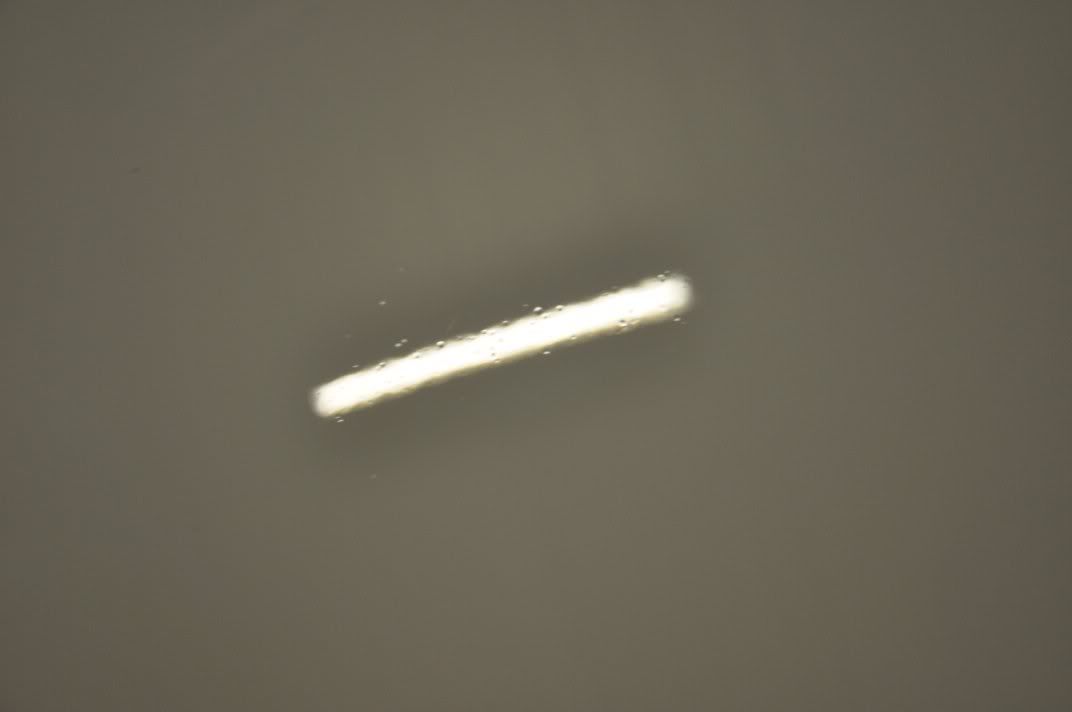
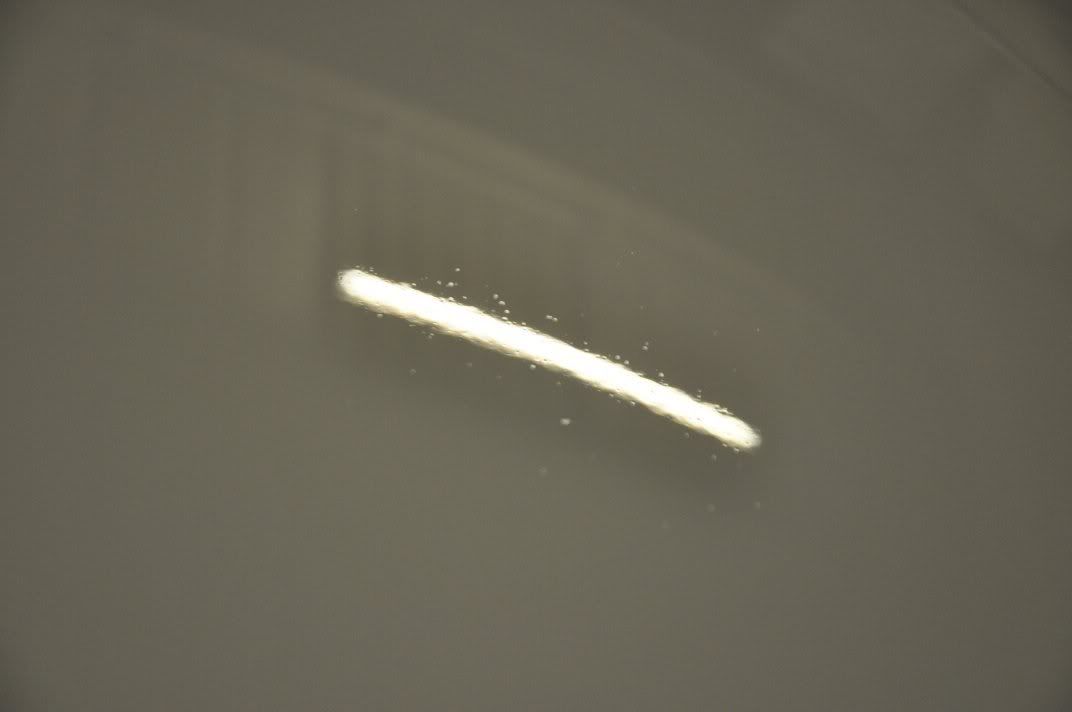
The paint thickness after 85RD, 106FA, 85RD3.02 and 5xFC+, 106FA: After 106FA refine = 107.1um
A removal of: FC+ Removal = 0.0um
Overall, we have removed a total thickness here:
Total Paint Removed = 11.9um
which has been enough to go from this:

to this...
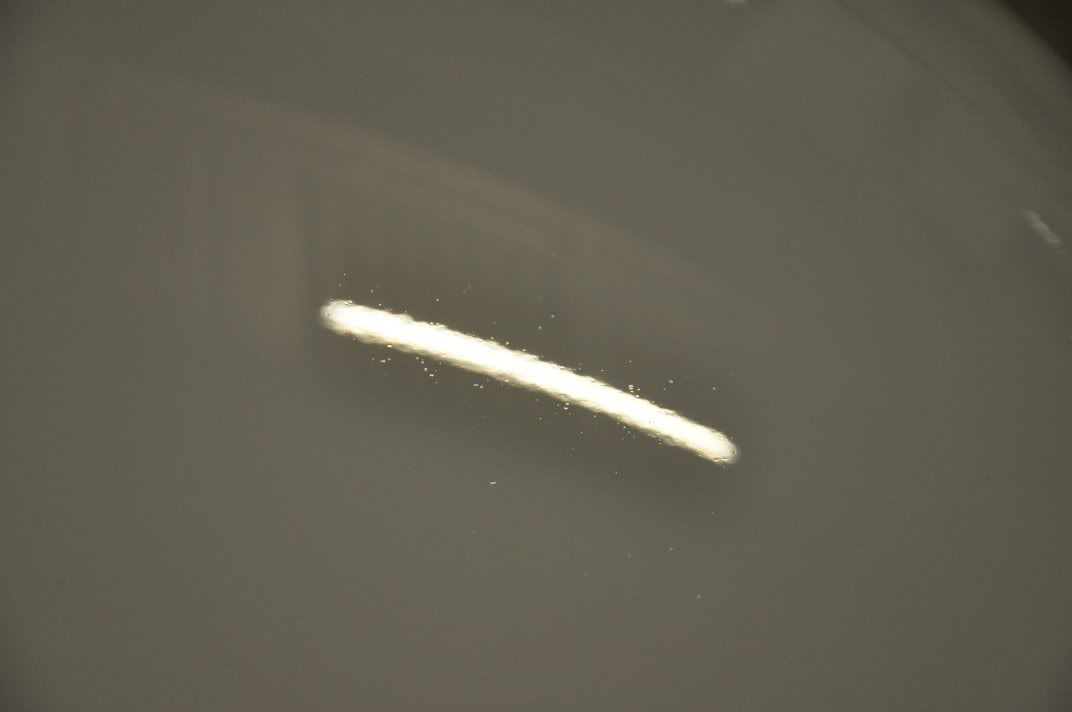
So, what has all this told us?
First of all - you think Vauxhall paint is soft?! Well, 5 hits of FC+ and we are only just over 10um of paint removed, so soft is certainly not something we can level at this finish - its always best never to assume the paint hardness as some cars are just different for a variety of reasons.
Next, look at the initial removal from 85RD - its more than for IP, and similar to FC+! Now this could be put down to gauge error, but this is a consistent finding I am seeing. It would appear the top layer of the paint is consistently softer (especially on older cars) which is possibly down to UV degredation, softening the upper layers of the paint. In any case, expect initial removal rates to be higher than following removal rates as this example shows.
On the subject of gauge error, you can see that there is notable gauge error here so you should only use the numbers as a guide, an estimate. Take more readings per average and you will help to reduce the "noise" in your data
I hope this proves interesting food for thought on paint removal rates when polishing, just as an example on a real car

The car used in this example: A white (faded) Vauxhall Vectra SRi V6:

The paint was well faded...



The full detail on this car will be the subject of a writeup in a few days time - I have a visitor from Romania, Alex, who is learning the ropes of detailing with me and this is one of his projects
 But for now, this car will be sued as an experiment base for this example
But for now, this car will be sued as an experiment base for this example 
First of all, we measure the paint thickness on a selected spot on the car, round a stone chip that wont polish out we took 10 or so readings of the paint thickness over the same spot and calculated the average thickness before starting to polish.
The starting thickness: Start Thickness = 119.0um
First of all, the car was polished using Menzerna PO85RD Final Finish on a Meguiars Finishing pad - very light combination, not expected to achieve much correction or remove much paint. The results of polishing with this combo, by rotary, using the Zenith Point Technique:


Under the Sun Gun, the colour and some of the gloss restored but still a lot of scratches there...


Using the strip light we can see the deeper RDS better, and also we see a pitting in the paintwork - this is a road rash, lots of little stone chips which are very deep into the paintwork. We will look at removing these and the thicknesses removed required to do so...

The thickness after one hit of 85RD: After 85RD = 117.3um
A removal of: Paint removed = 1.7um
Now, stepping up to Menzerna PO106FA Final Finish, applied using a meguiars W8006 polishing pad using the Zenith Point Technique and we get the following results under the Sun Gun:


and under the strip light, where we still see deeper scratches and the pitting...

The paint thickness after 85RD and 106FA: After 106FA = 116.6um
A removal of: 106FA Removal = 1.1um
Stepping up again, to Menzerna PO85RD3.02 Intensive Polish on a polishing pad, applied using the Zenith Point Technique and we get the following results...


Under the strip light we see the deeper RDS are now largely removed, but the pitting remains strongly...

Definitely making a difference to the finish though!

The paint thickness after 85RD, 106FA and 85RD3.02: After 106FA = 116.2um
A removal of: 85RD3.02 Removal = 0.4um
With less than 3um of paint removed this far, it was decided it was safe to step up to more aggressive compounding to see if the pitting could be minimised further. So, up to 3M Fast Cut Plus, Meguiars W7006 cutting pad, applied by spreading at 600rpm and working at 2000rpm until residue goes clear and machine starts to drag slightly. Results after one hit of FC+:


Under the strip light, still see the pitting but its getting better...

The paint thickness after 85RD, 106FA, 85RD3.02 and FC+: After FC+ (1st) = 114.4um
A removal of: FC+ Removal = 1.8um
A second hit of FC+ gives:



The paint thickness after 85RD, 106FA, 85RD3.02 and 2xFC+: After FC+ (2nd) = 115um
A removal of: FC+ Removal = -0.6um (paint added - this is measurement error)
A third hit of FC+:



The paint thickness after 85RD, 106FA, 85RD3.02 and 3xFC+: After FC+ (3rd) = 113.2um
A removal of: FC+ Removal = 1.8um
As the pitting is minimising but still there, we keep going with FC+ - we could get more aggressive with #105 or wool here, but the FC+ on foam allowed for a flexible and controlled removal rate.
So - after 4th hit of FC+:




Pitting definitely improving here. Paint readings:
The paint thickness after 85RD, 106FA, 85RD3.02 and 4xFC+: After FC+ (4th) = 108.4um
A removal of: FC+ Removal = 4.8um
Bigger paint removal here.
5th and final hit of FC+ gives:



Under the strip light we can see the pitting well and truly deadened if not fully removed (remember, these are pin pricks from stones and grit, so they are deep!):


What of the paint thicknesses?:
The paint thickness after 85RD, 106FA, 85RD3.02 and 5xFC+: After FC+ (5th) = 107.1um
A removal of: FC+ Removal = 1.3um
The finish was then refined using 106FA on a polishing pad, and this gives the following final finish results - still slight evidence of the pitting, but with notable paint removal now, it is best to leave these marks to allow for future correction on the car at a later date, as this pitting will return with more miles (currently 100k on this car just now).




The paint thickness after 85RD, 106FA, 85RD3.02 and 5xFC+, 106FA: After 106FA refine = 107.1um
A removal of: FC+ Removal = 0.0um
Overall, we have removed a total thickness here:
Total Paint Removed = 11.9um
which has been enough to go from this:

to this...

So, what has all this told us?
First of all - you think Vauxhall paint is soft?! Well, 5 hits of FC+ and we are only just over 10um of paint removed, so soft is certainly not something we can level at this finish - its always best never to assume the paint hardness as some cars are just different for a variety of reasons.
Next, look at the initial removal from 85RD - its more than for IP, and similar to FC+! Now this could be put down to gauge error, but this is a consistent finding I am seeing. It would appear the top layer of the paint is consistently softer (especially on older cars) which is possibly down to UV degredation, softening the upper layers of the paint. In any case, expect initial removal rates to be higher than following removal rates as this example shows.
On the subject of gauge error, you can see that there is notable gauge error here so you should only use the numbers as a guide, an estimate. Take more readings per average and you will help to reduce the "noise" in your data

I hope this proves interesting food for thought on paint removal rates when polishing, just as an example on a real car



 TOP
TOP


Comment